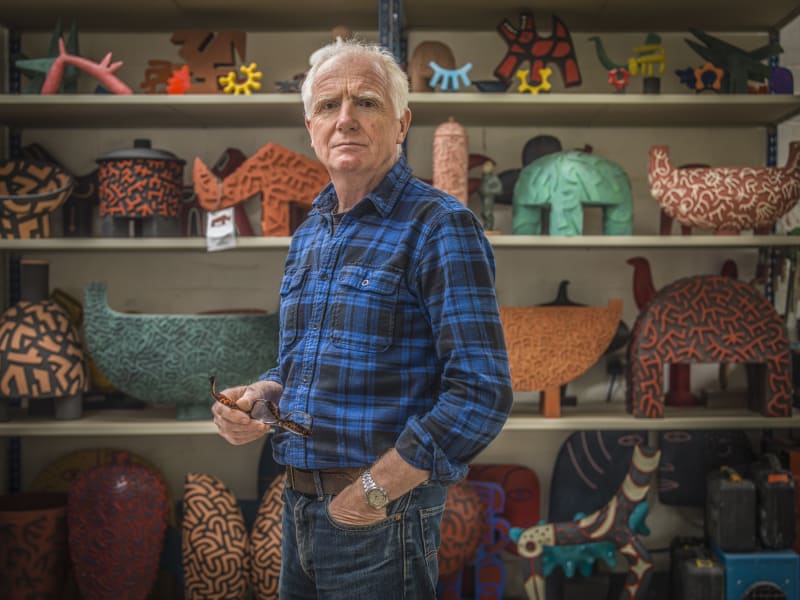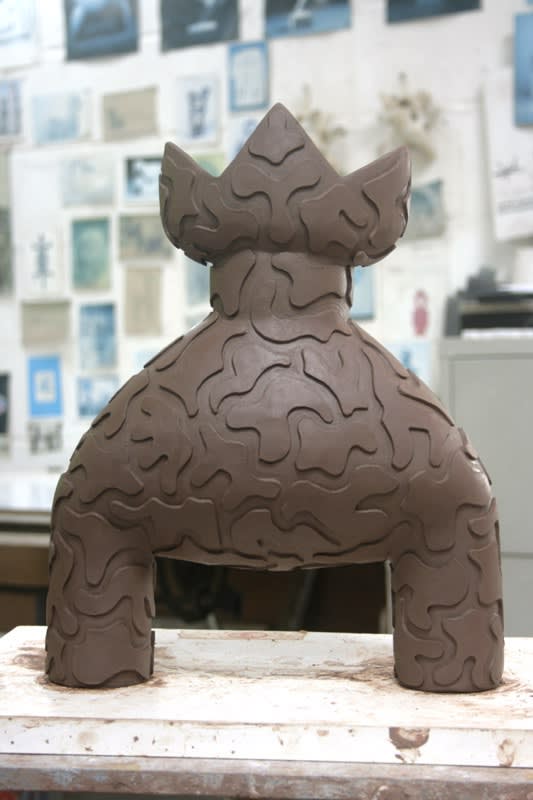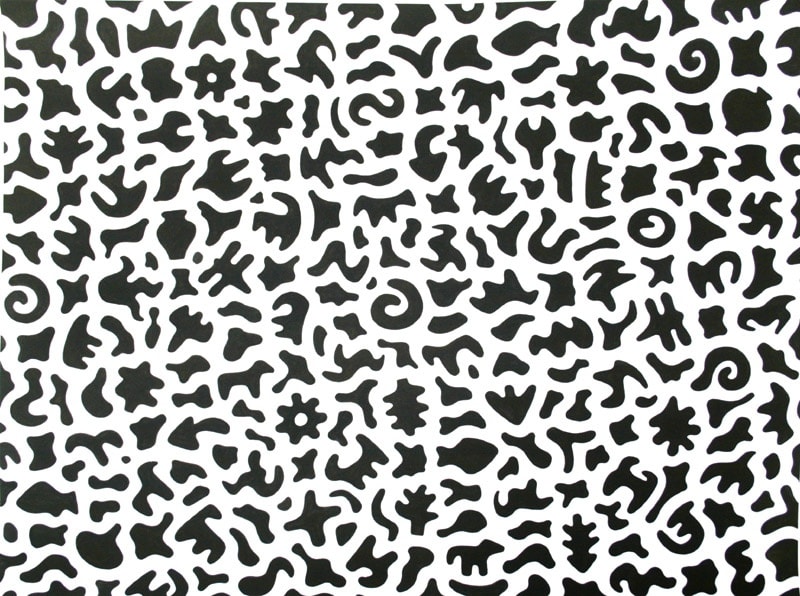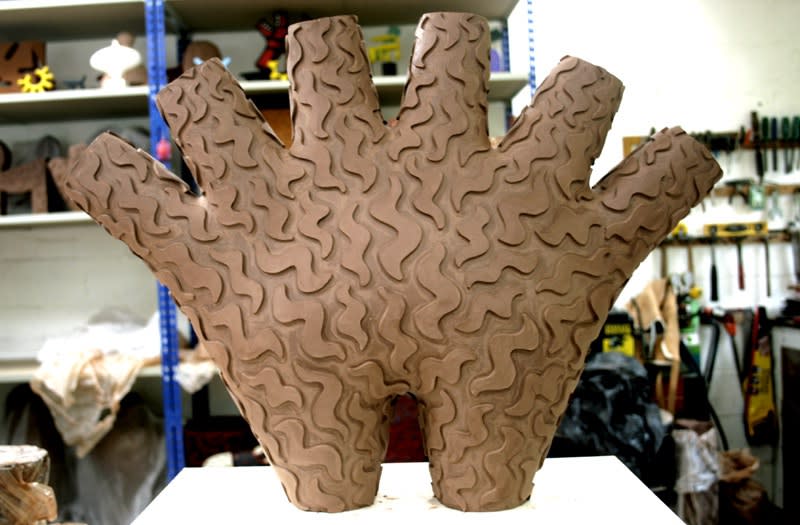How has lockdown affected your routine and practice?
I must confess this period of isolation that most of the nation is undergoing hasn’t affected my routine or practice in any substantial way. Like most individual practitioners, sculptors like writers or composers, spend their working lives in what is effectively continual self-imposed lockdown. My daily commute involves a stroll through the garden stopping to investigate some new plant or creature that has emerged during this wonderful spring weather.
What have you been working on today?
I’ve been working for some time now on a series of sculptures that have highly patterned surfaces. For the most part this process is intended to represent the ‘web of life' that is the world's biodiversity. But in addition it has the effect of allowing the sculptural form to become much more minimal. Perhaps surprisingly these patterned surfaces have the tendency to also enhance the three-dimensional quality of the work but also help me convey a more complicated narrative.
What are you missing the most during isolation?
In the short term in my working practice I’m pretty well self-sufficient. But in the longer term I will miss working with the team of people that help to realise the sculptures into their final phase of becoming bronzes or fired ceramics. Also recently I have been inspired working with digital specialists developing how to transfer my two -dimensional patterned glyphs into fully realised three-dimensional sculptures. On a more prosaic note what I have really missed is the opportunity to include a short visit to the local pub on our evening walk routine.
Are you struggling to get hold of materials and does this mean you are coming up with original ideas to compensate?
Again in the short term I have all the materials I need. For some time now I have changed my working practice somewhat. Instead of welding metal armatures to support clay or plaster forms which then have to be cast before going to the foundry to be cast yet again, I have started using ceramic building techniques. Which in turn means the only resource I need is clay. As a consequence I have become increasingly interested in the restrictions and disciplines of this making process have on the form of the finished sculpture. Sometimes self-imposed restrictions can have the effect of demanding more creative solutions.
In this lockdown period itself I have embarked on a series of smaller pieces. Partly with an eye to the prospects of exhibiting the work in the immediate future but more particularly as an experiment to see how a sculpture might evolve by working on a number of pieces of the same subject simultaneously. Apposite of the current situation the subject of the work is the Red Queen, a hypothesis inspired by the character in Alice Through the Looking Glass who insists that to remain where you are one must run as fast as one can. The suggestion being that evolution is a continual arms race between species - in this case between us and a virus.
What are you doing to remain positive?
One has to remain positive, these sorts of pandemics have occurred many times before in our history and life eventually gets back to some sort of equilibrium. Keeping on keeping on is the only solution.
What advice would you give to your fellow creative practitioners?
Keeping on keeping on!
Do you think art and the art world will look different when we re-emerge from isolation?
I imagine the art world will inevitably look different when all this is over but it’s hard to conjecture exactly how. Probably many outlet opportunities will have diminished and one wonders whether the appetite art will be the same. But judging by the response to the many online gallery and museums I think there is reason to be optimistic.
Can you recommend a good art related book, podcast or film/series for everyone in lockdown?
I think the books What is Art For and Homo Aestheticus by anthropologist Ellen Dissanayake are innovative arguments for anyone interested in the universal compunction to create art.
Equally, those interested in alternative antecedents for the tradition of Western art might like to read The Language of the Goddess by Maria Gimbutas. Her archaeological work in what she calls ‘Old Europe’ reveals sophisticated cultures that existed well before Greece and Rome and whose preoccupations were much less militaristic and patriarchal and had far more reverence for the natural world.
What is your favourite recipe during lockdown?
There’s no doubt that food has been an especially important comfort in this time of social restriction. During our routine exercise walks we have managed a little foraging and wild garlic pesto has been a revelation. But a more indulgent comfort has been to sit down in the sunshine on a spring afternoon with a cup of tea and a piece of chocolate cake: one of the best is Nigel Slater’s Chocolate Expresso Cake which you can find online.
Which artist (dead or alive) would you most like to be in isolation with and why? Oh God, would I really like to be locked down with another artist? I think not! If pushed I think it would have been interesting to have seen Brancusi at work and to talk to him about his decision to break away from the figurative influence of Rodin and develop his own vision for sculpture for the beginning of the twentieth century. Equally it would have been fascinating to have discussed with Jean Dubuffet his radical shift away from what he considered Modernist elitism to form the Art Brut movement. Both possibilities however would put a serious strain on my grasp of the French language! On reflection perhaps it would be more invigorating to have insights from another artistic discipline altogether; a poet perhaps and I think Ted Hughes would be a good choice. His ability to observe the natural world and then to mythologise it into something memorable and meaningful is I think enviable but then anyone born in a place called Mytholmroyd must have had a distinct advantage.




